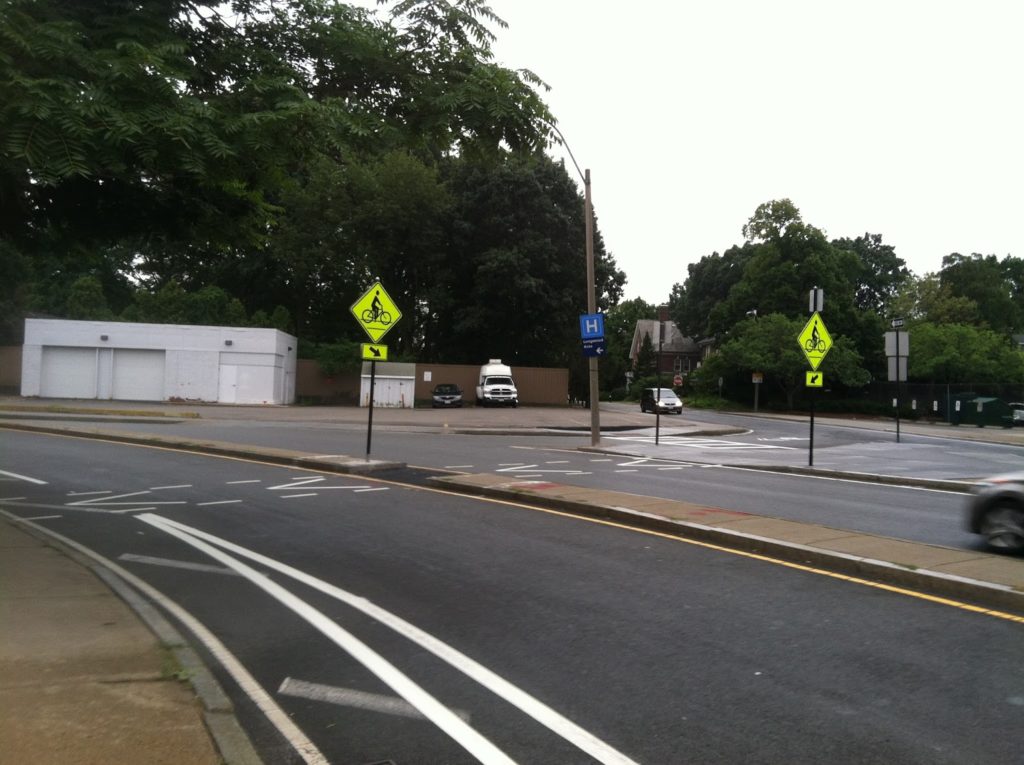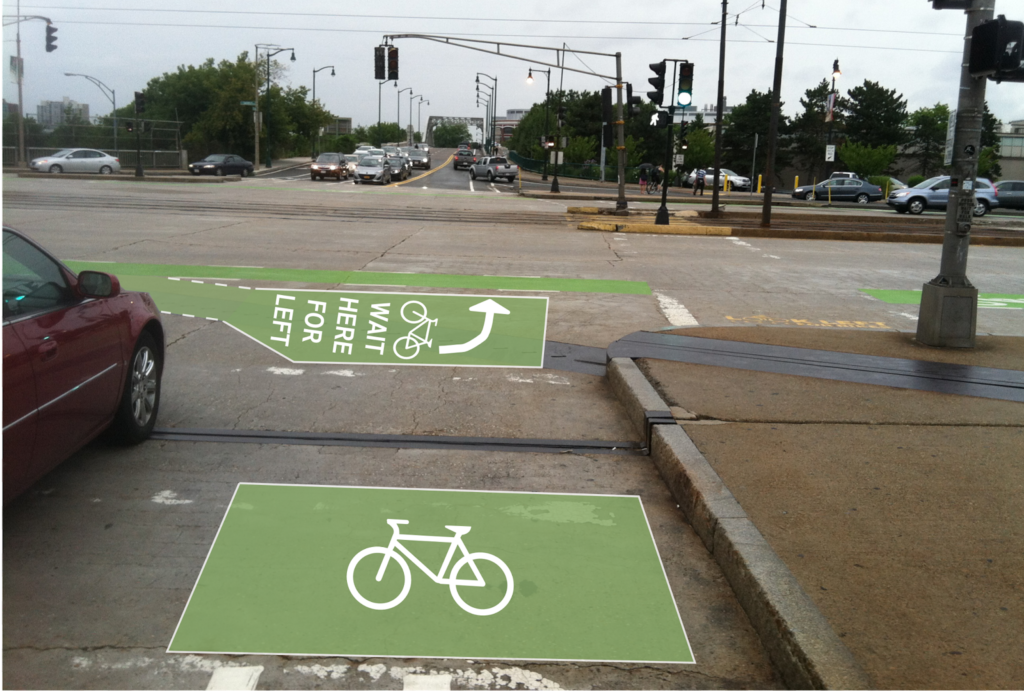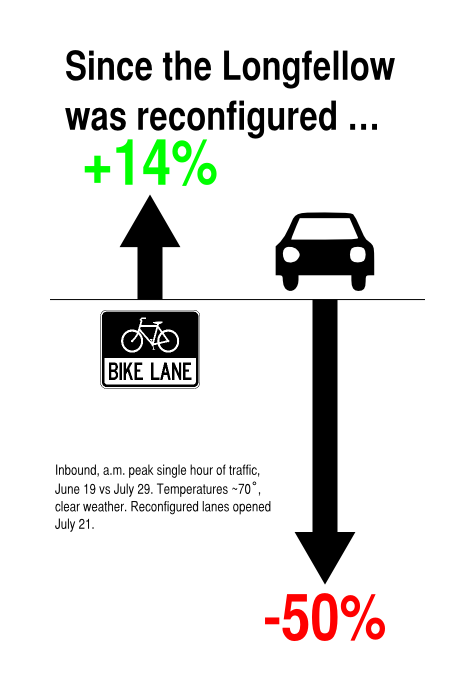Boston’s massive reconstruction of the Longfellow Bridge
began this month. Over the next three years, traffic will be severely
restricted, bicyclists mostly accommodated, and rail traffic mostly maintained
across a major link in the transportation system which carries 100,000 transit
riders as well as several thousand bicyclists and pedestrians across the
Charles River (and some vehicular traffic, too).
In late June, I took a baseline, pre-construction count of
morning, inbound traffic across the bridge. With the new traffic configuration
in place (an inbound bike lane, a travel lane, a pylon-lined buffer and an
outbound bike lane, plus the sidewalk) I decided to take a new snapshot of the
bridge traffic. Had traffic declined with fewer lanes available? Are cyclists
shying away from the new configuration?
Here’s what I found, summed up in one chart:
Bicycle counts stayed about the same (they actually rose,
overall, and the peak hour saw 308 cyclists, an increase 14%). Vehicle counts, however, showed a dramatic drop, declining by 50% from 840 to 400 during the peak hour of use! It’s interesting that this is
not due, necessarily, to restricted capacity (the one lane of traffic didn’t
back up beyond the midpoint of the bridge at any time when I was counting,
although the afternoon is a different story) but perhaps the perception of
traffic, and the fact that the single lane reduces traffic speed quite a bit.
No lack of praise should be given to MassDOT for this
iteration of the Longfellow traffic pattern. The bicycle facilities are, if
anything, improved over the bridge before, especially considering the much lower vehicular traffic speeds and
volume. And there is no lack of cyclists—even on one of the quietest weeks for
traffic midsummer, there were more bikes than a day with similar weather in
June.
A few other tidbits:
- Bicyclists and Pedestrians accounted for 60% of the traffic on the bridge. Cars transported fewer people than human power. (See diagram below.)
- Between 8:30 and 8:45, there were actually more bicyclists
crossing the bridge than vehicles.
- Pedestrians of all types outnumber cyclists (although this
includes both joggers and “commuters”—as defined by me—in both directions).
- The flow of “commuting” pedestrians is a mirror image of
bicyclists. There are four times as many Boston-bound cyclists as
Cambridge-bound, but more than twice as many Cambridge-bound Pedestrians as
Boston-bound. (There are fewer joggers, but they exhibit a preference towards
running eastbound across the bridge, differing from the other foot traffic.) Overall there are more bicyclists going towards Boston and more pedestrians towards Cambridge.
- While 24 Hubway shared bikes accounted for only 5% of
inbound bicycle trips, the 20 outbound Hubways made up 18% of the
Cambridge-bound bicyclists.
- Only four cyclists used the sidewalk, and only one rode the wrong way in the contraflow lane. (I yelled at him.)
And one more diagram showing bridge use (for the record, one chart, one diagram and one infographic, and one annoying and slightly misleading title):







